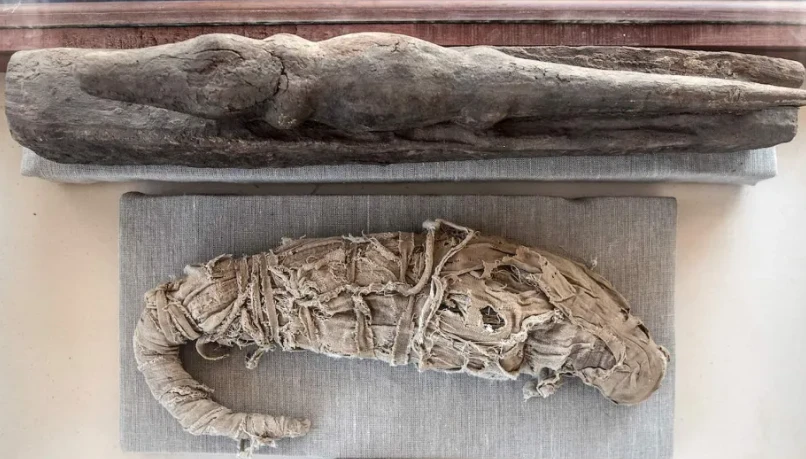The researchers were able to examine the specimens without unwrapping them or using CT and X-rays.
In addition to humans, the ancient Egyptians also mummified animals, such as crocodiles, and their own pets. Now, researchers had access to crocodile mummies to analyze them and discover secrets of that civilization.

A group of crocodiles were mummified in a unique way at the Egyptian site of Qubbat al-Hawā during the fifth century BC, according to a study published on January 18, 2023 in the open access journal PLOS ONE by Bea De Cupere of the Royal Belgian Institute of Natural Sciences (Belgium) and the University of Jaen (Spain), and their colleagues.
The study points out that although there are several hundred mummified crocodiles in museum collections around the world, they are rarely examined in depth. Therefore, in this study, the authors offer a detailed analysis of the morphology and conservation of ten crocodile mummies found in rock tombs at the Qubbat al-Hawā site, on the west bank of the Nile.
Mummified #crocodiles provide insights into #mummy-making over time @plos @PLOSONE https://t.co/IoQ7mN2a24
— Phys.org (@physorg_com) January 18, 2023
“In an intact tomb at Qubbat al-Hawā (Aswan, Egypt) ten crocodile mummies were found, including five more or less complete bodies and five heads. The mummies were in different states of preservation and integrity,” the study authors stated.
The researchers were able to examine the specimens without unwrapping them or using CT and X-rays. Based on the morphology of the crocodiles, two species were identified: West African crocodiles and Nile crocodiles, with specimens ranging from 1.5 to 3.5 meters in length.

Unique preservation methods
In the analysis, it was found that the style of conservation of the mummies is different from that found in other sites, mainly because they lack indications of the use of resin or evisceration of the corpse as part of the mummification process. The style of preservation suggests an antiquity before the Ptolemaic period, which is consistent with the final phase of funerary use of Qubbat al-Hawā during the 5th century BC.
Comparison of mummies between archaeological sites, according to the scientists, is useful for identifying trends in animal use and mummification practices over time. However, they acknowledge that the limitations of this study include the lack of available ancient DNA and radiocarbon, which would be helpful in refining the identification and dating of the remains.
The study authors conclude that future studies incorporating these techniques will contribute to scientific knowledge of ancient Egyptian cultural practices.

